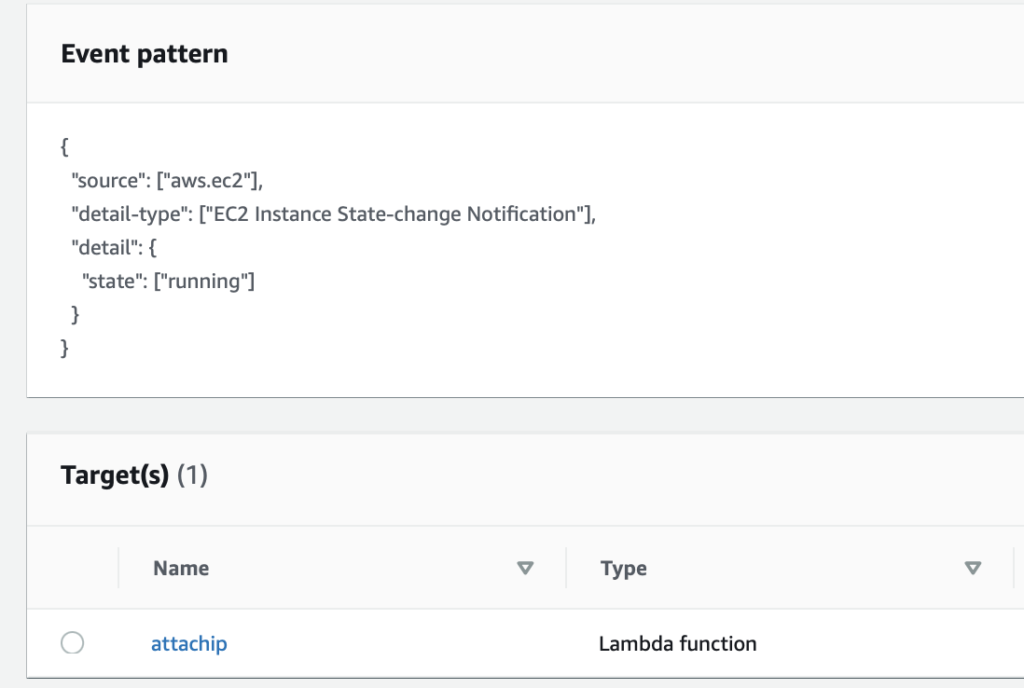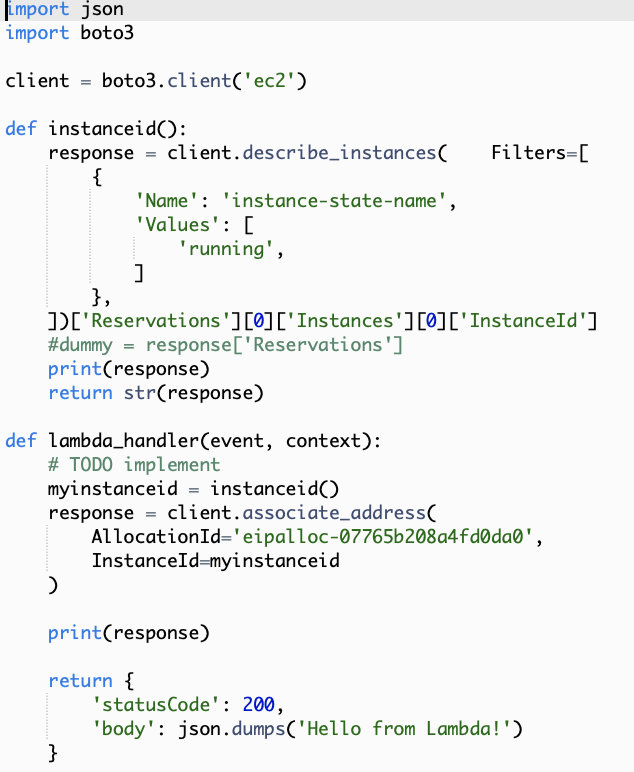Bernd Kuhlens portfolio
how to attach the ip
In case a new ec2 machine comes up and reaches the running state a lambda function is triggered. This is achivied by aws eventbridge with a simple ruleset:

Once the running state is reached the target, a lambda function, is called.
For ease of use ( I would never do that on production environements ) my lambda function has a mighty IAM role so the lambda function is authorized to attach my elastic ip to my ec2 instance.
Here’s my python3 code:

To interact with AWS via SDK I first import the boto3 module and call an ec2 client because to configure my ec2 instance I need an ec2 object to handle with first. When the lambda is called (on the running instance event described above) the lambda_handler() function is executed. The elastic IP is fixed, so I have a fixed AllocationID which is needed in my associate_address() function call as the 1st parameter. The InstanceId however can change as AWS gives a new Id whenever an instance is recreated after termination. To dynamically get that id I call another method (for better readability) instanceid().
In instanceid() I use my ec2 object again to first list my instances. In my account this is easy as I only have one instance running. So I use the describe_instances() method with a given filter of instance-state-name = running. If my environment had more instances running I would have to adopt my filter which still is pretty easy (with tags for example). This methods returns json which I have to parse (for dictionaries and lists) to get that one value in question, the “InstaneId”. For debugging purposes (every function call is logged in CloudWatch Logs) I print my value before returning it.
As outlined in the beginning with the two values of AllocationId and InstaneId I can attach my elastic ip to my (new) running ec2 instance.
Together with my autoscaling group (which makes sure there is always one instane running) this makes sure, that whenever AWS (or I) kill my ec2 instance it gets replaced. To roll out a new version of my wordpress I first edit it, then make a new AMI (as a backup so to say), update my launch template with the new AMI and then kill my ec2. A new ec2 (from the new AMI) is rolled out and my elastic ip is attached.